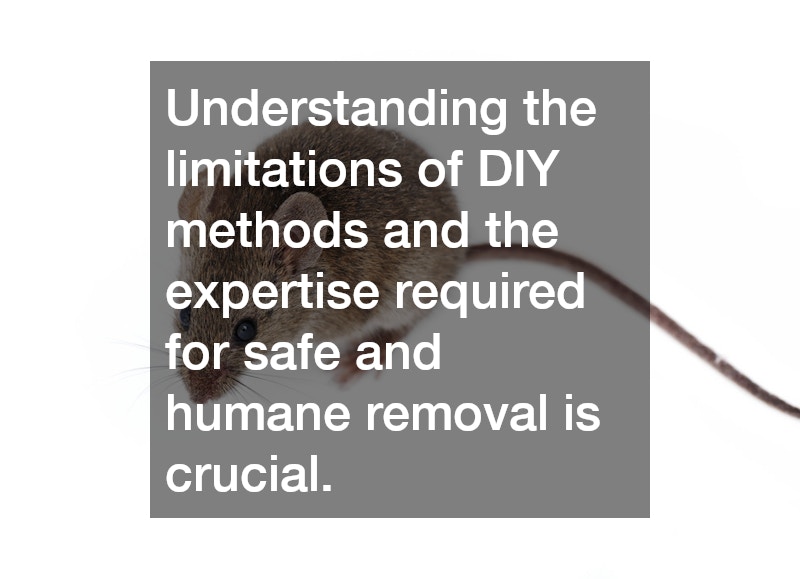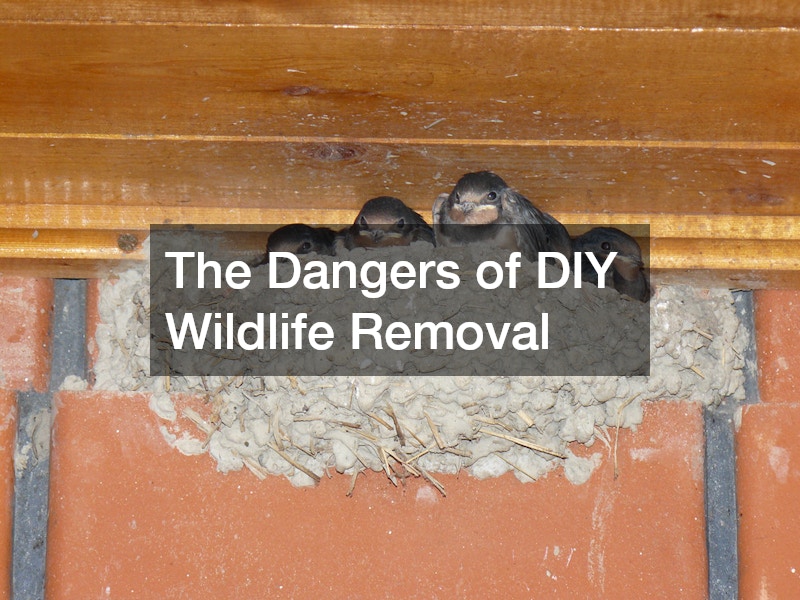Wildlife encounters in residential areas are more common than many homeowners realize. From raccoons in attics to squirrels in basements, unwanted animal intrusions can create significant stress, property damage, and health risks. While it might seem cost-effective to handle the problem yourself, DIY approaches to wildlife removal often carry serious dangers that are frequently underestimated. Understanding these risks and knowing when to call professionals can save you time, money, and even your health.
Physical Risks Of DIY Wildlife Removal
Attempting wildlife removals without proper training exposes homeowners to numerous physical hazards. Many wild animals, even seemingly harmless ones like squirrels or birds, are capable of biting, scratching, or clawing in self-defense.
These injuries can result in infections, some of which may be serious or require medical attention.
For example, raccoons can carry rabies, a deadly virus that is transmissible to humans. Even if an animal does not appear sick, the potential for disease is significant. Additionally, handling wild animals without the proper protective equipment increases the likelihood of exposure to parasites such as fleas, ticks, and mites. These parasites can carry illnesses such as Lyme disease or typhus, which are difficult to treat and can have long-term health effects.
Falls and other accidents are also common during DIY removal attempts. Climbing onto roofs, into attics, or around difficult terrain without safety gear can result in serious injuries. Homeowners often underestimate the complexity of safely capturing or evicting wildlife, making physical harm a major risk.
Legal And Ethical Considerations
DIY wildlife removal is not just a physical risk—it can also pose legal and ethical challenges. Many species are protected by federal, state, or local laws, which dictate what can and cannot be done in terms of trapping, relocating, or euthanizing wildlife. Removing certain animals without proper permits can result in hefty fines or legal action. For instance, disturbing bat colonies or bird nests can violate wildlife protection laws, even if your intentions are simply to reclaim your home.
Ethical considerations also come into play. Improper handling or relocation can lead to unnecessary suffering for the animal. Wildlife experts are trained to use humane methods that minimize stress and avoid injury, ensuring that animals are treated responsibly. Attempting to trap or poison animals without this knowledge can inadvertently harm them or disrupt local ecosystems, creating broader environmental consequences.
Property Damage And Ineffective Solutions
One of the biggest risks of DIY wildlife removal is property damage. Many people underestimate how clever and persistent animals can be. A simple hole in a roof or wall can be enough for a raccoon or squirrel to enter repeatedly. Inadequate removal techniques may lead to repeated intrusions, causing ongoing damage to insulation, wiring, vents, and structural materials.
For example, improper trapping methods may injure the animal but fail to remove it from the property, leaving homeowners with a stressed and potentially aggressive creature inside their home. Wildlife can also carry diseases into spaces like attics or crawl spaces, contaminating insulation or surfaces with urine, feces, or hair. Cleaning up after failed DIY attempts is often more costly and time-consuming than hiring a professional in the first place.
Professional Wildlife Removal: A Safer Alternative
Professional wildlife removals provide a safe, effective, and humane solution to animal intrusions. Trained experts assess the situation, identify the species involved, and implement strategies designed to safely remove and, when appropriate, relocate the animal. They use specialized equipment and techniques that reduce the risk of injury to both humans and animals.
In addition to removal, professionals often provide long-term solutions such as sealing entry points, offering preventive advice, and monitoring for future activity. This comprehensive approach minimizes repeat encounters and reduces the likelihood of property damage or disease transmission. For homeowners, the peace of mind that comes from knowing the job has been done correctly far outweighs the initial cost.
Choosing professional services also ensures compliance with legal requirements. Licensed wildlife removal experts understand the laws and regulations that apply to various species, protecting homeowners from inadvertent legal violations. They are trained to handle delicate ethical situations and to prioritize humane treatment, helping maintain ecological balance while solving a household problem.
While the idea of DIY wildlife removal may seem appealing as a cost-saving measure, the dangers involved are substantial. Physical injury, exposure to disease, legal ramifications, ethical concerns, and potential property damage all make home-based attempts risky. Wild animals are unpredictable and often more resilient than they appear, making professional intervention the safest and most effective option.
Understanding the limitations of DIY methods and the expertise required for safe and humane removal is crucial. Professional wildlife removals provide not only immediate relief but also long-term protection for your home and family. By investing in trained experts, homeowners can address wildlife issues responsibly, avoiding unnecessary risks and ensuring both human and animal safety.



